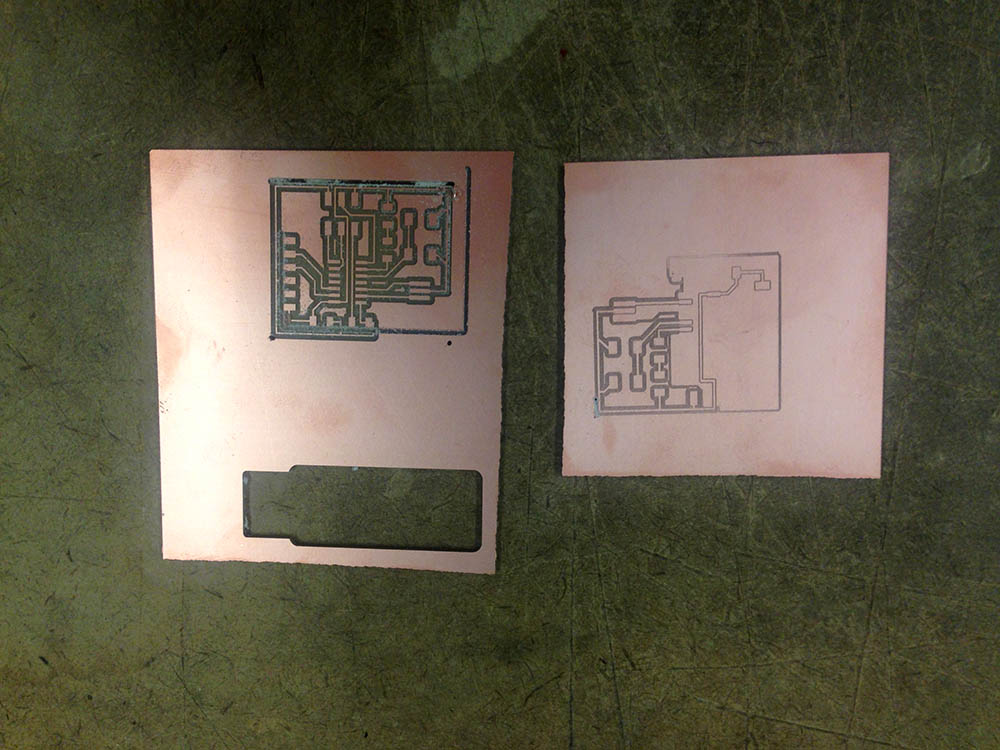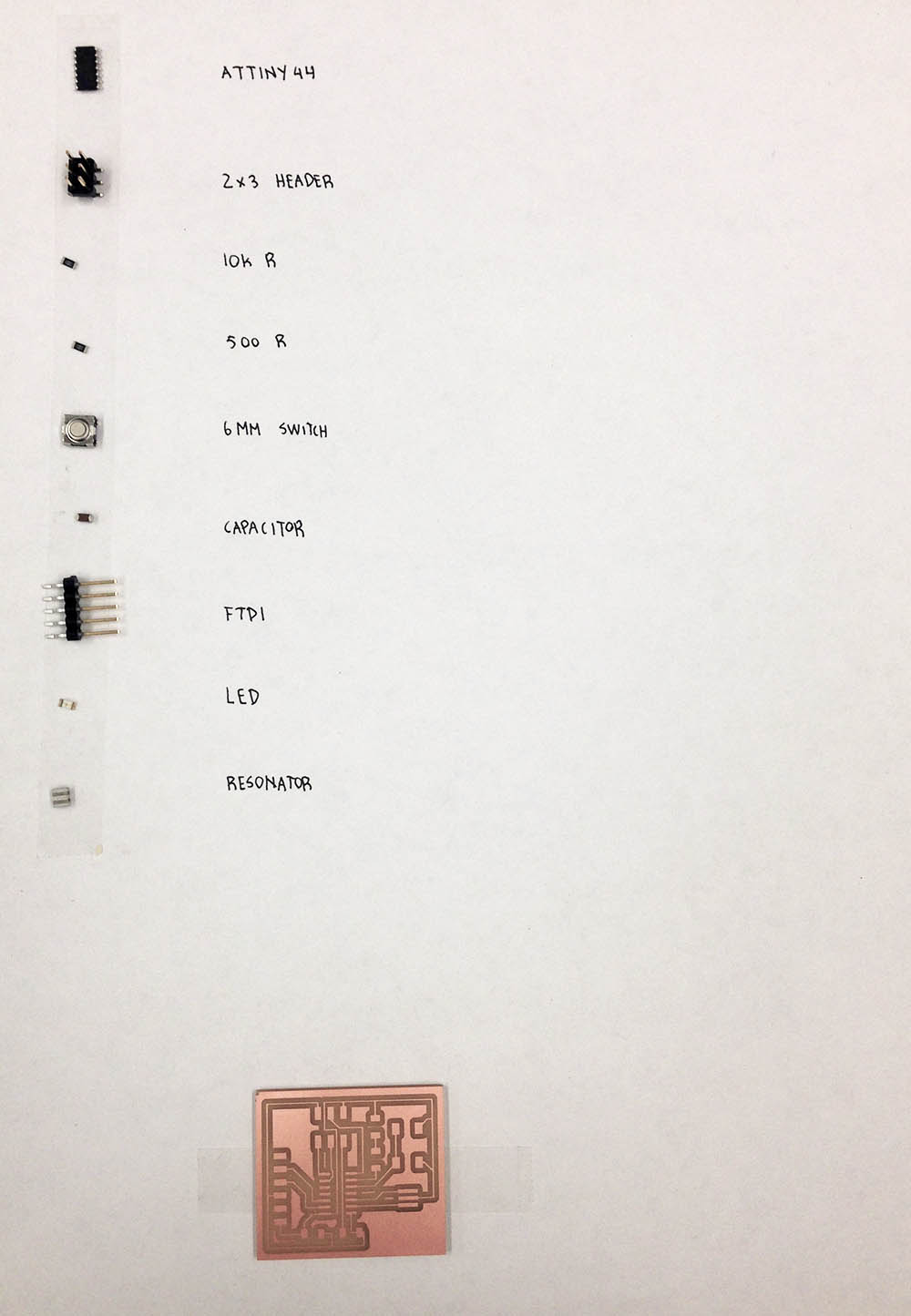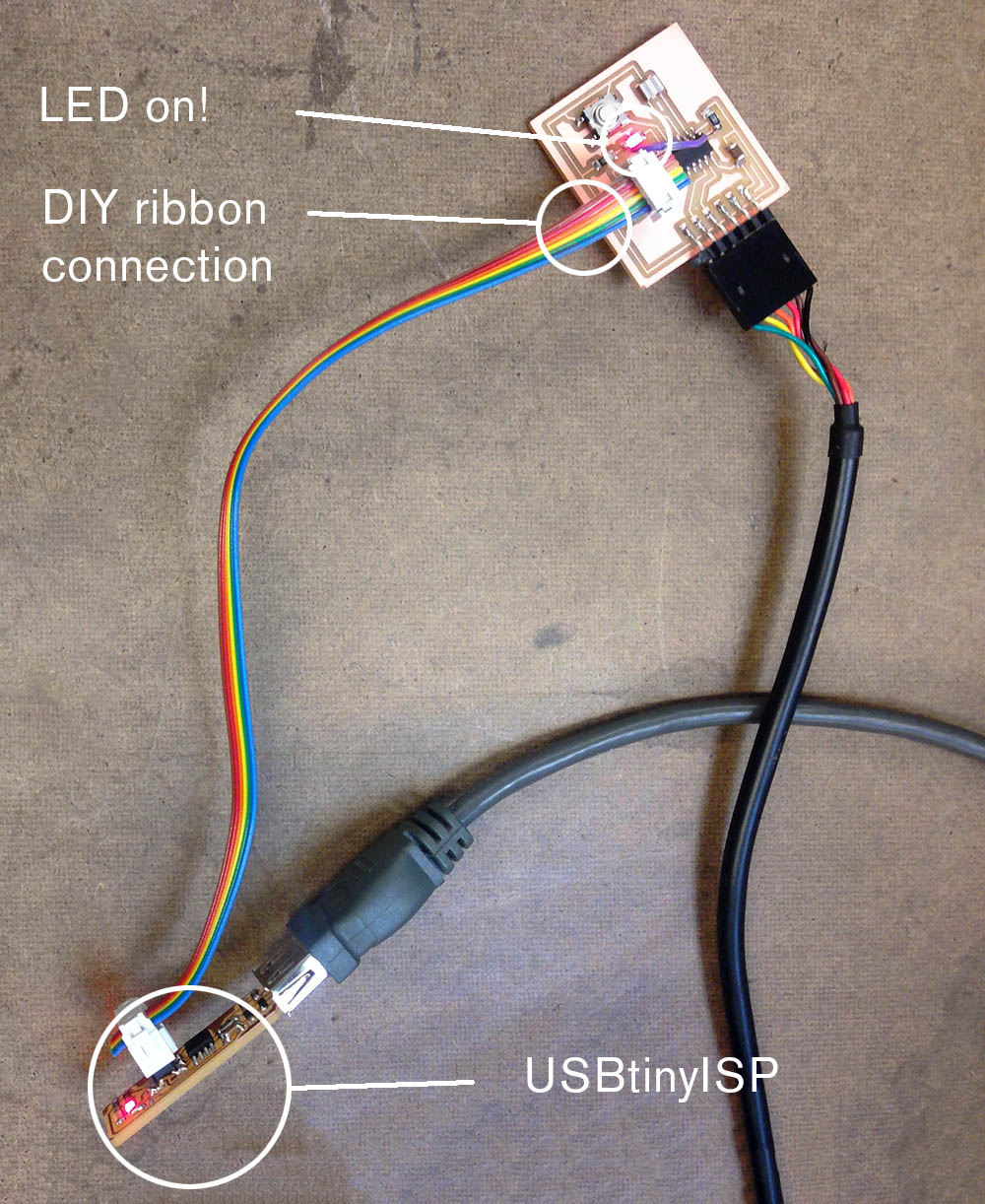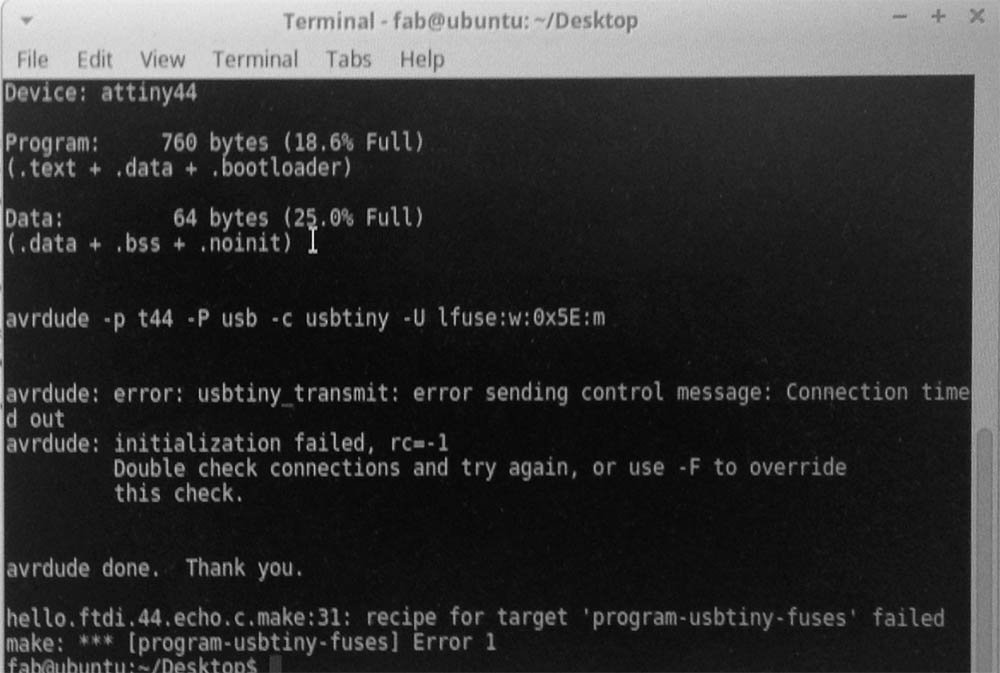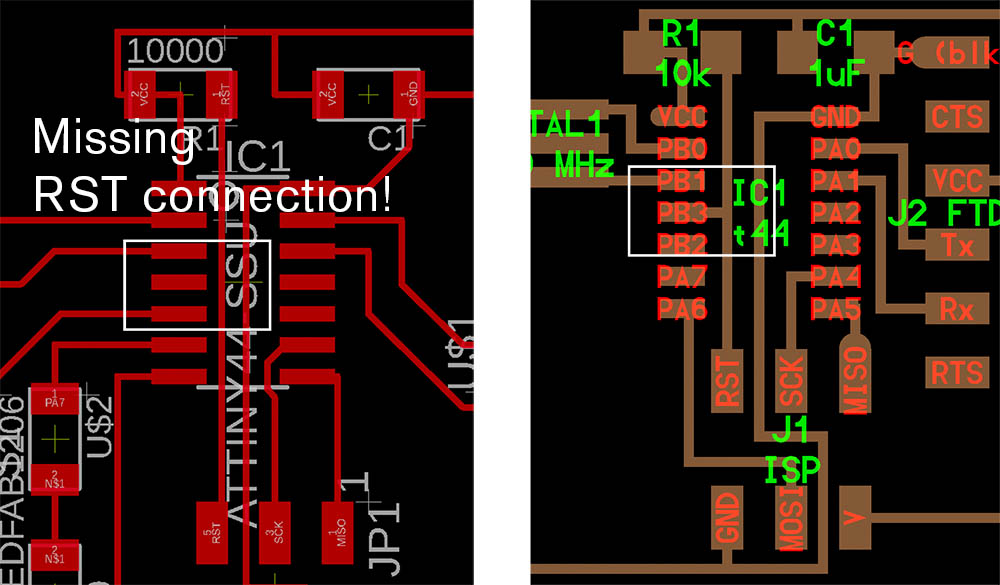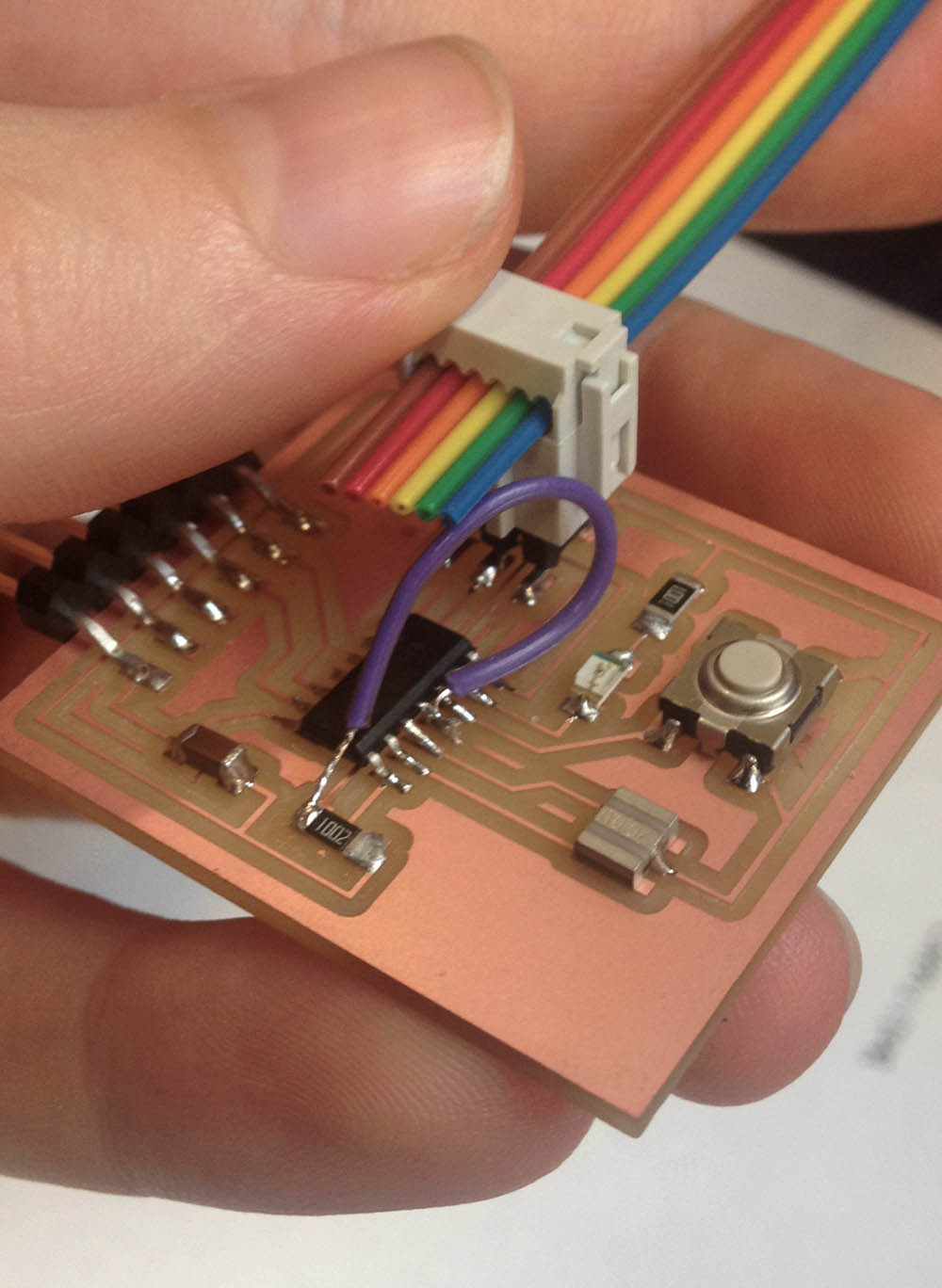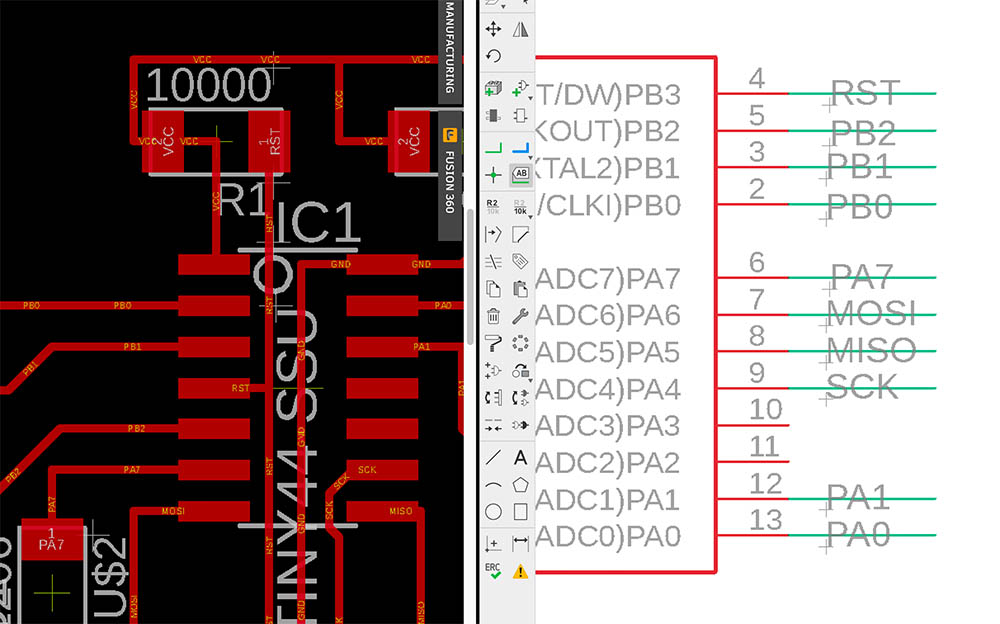Eagle
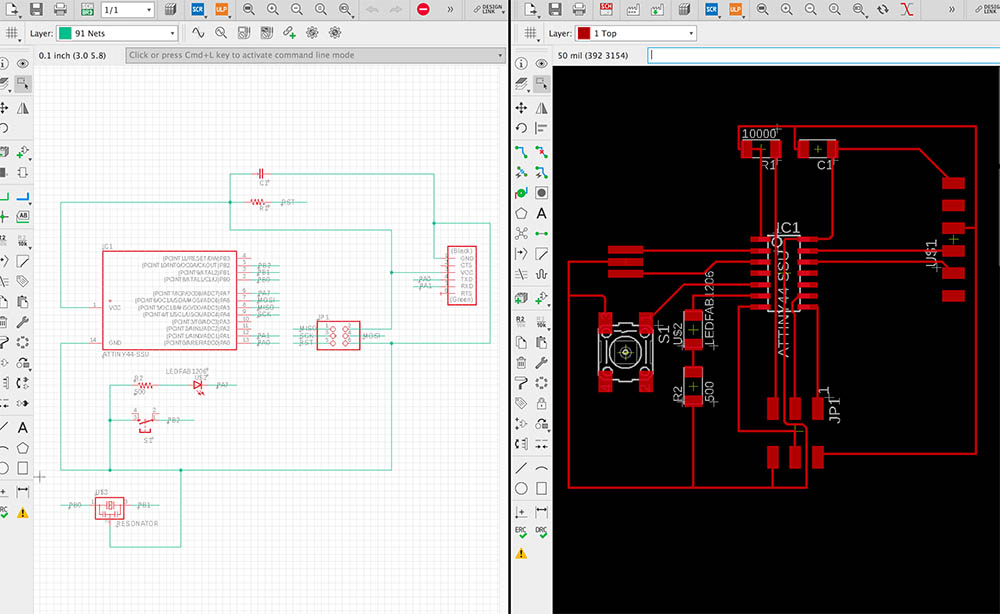
Eagle
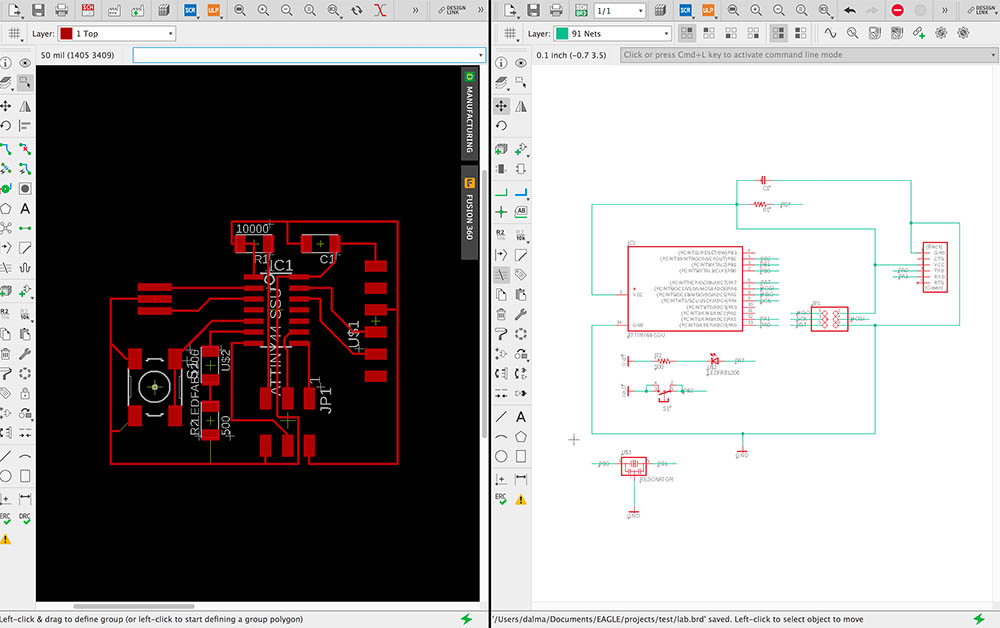
Ground connections cleaned up (some connections missing)
Our task was to reproduce the board here and to add a couple of extra components to it, then program it. Unfortunately, I missed the Eagle tutorial in recitation due to an architecture studio review (always on Thursdays unfortunately!), and I'm really grateful to Axel & Paloma for catching me up on Friday! Still, there are definitely gaps in my understanding, and I spent quite a bit of time getting used to the interface. I found NAME-ing parts extremely useful, and I only learned about the design rules & the fab library on Friday, which otherwise made it impossible to copy the components.
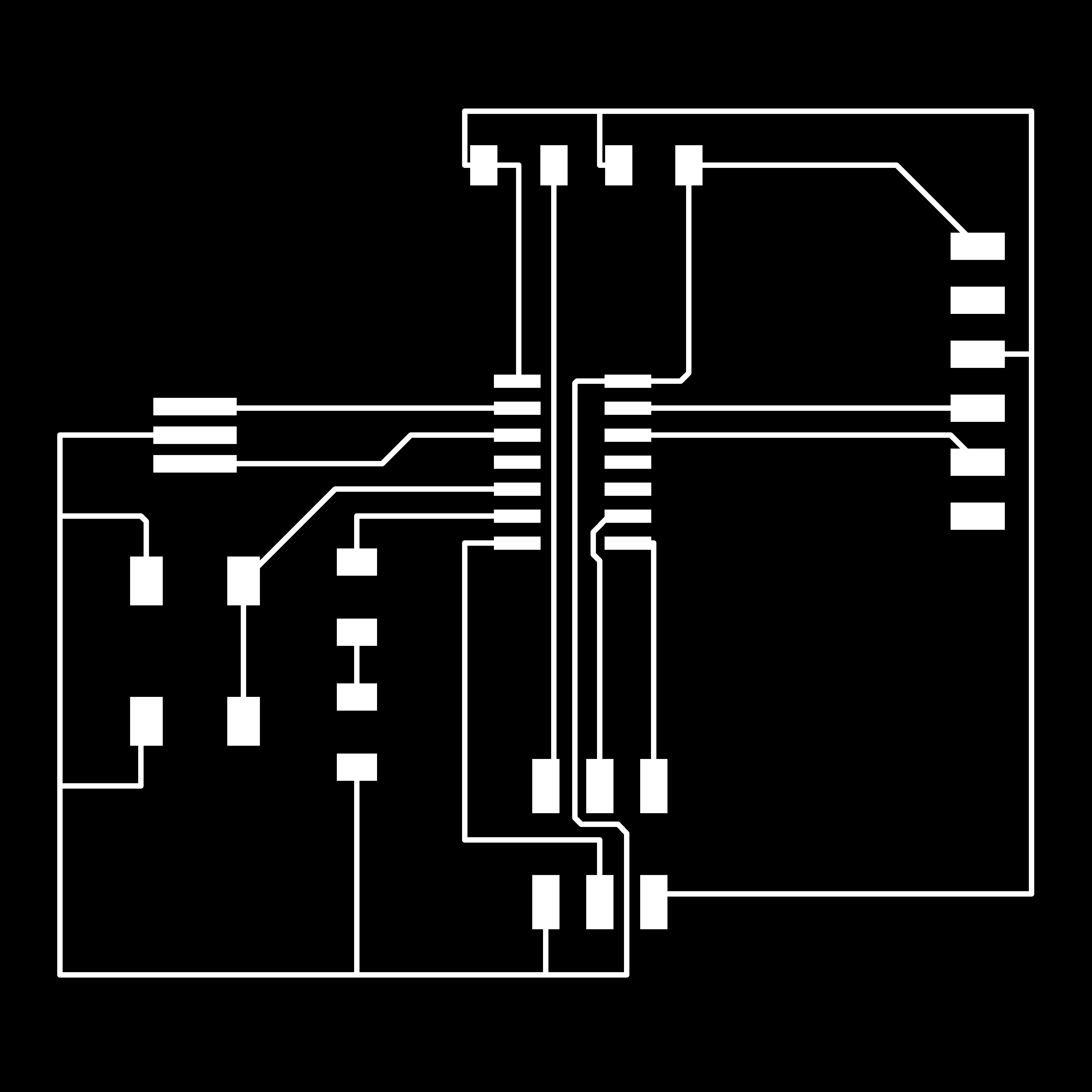
Initial board
My initial board was (still is!) probably too large and strangely distributed, but I tried to follow the traces on the website to create a more compact design. I had to move parts together several times to get a smaller area, plus I also had the Mac 2x resolution issue, where my board turned out to be 4" x 4".

More compact, smaller board.
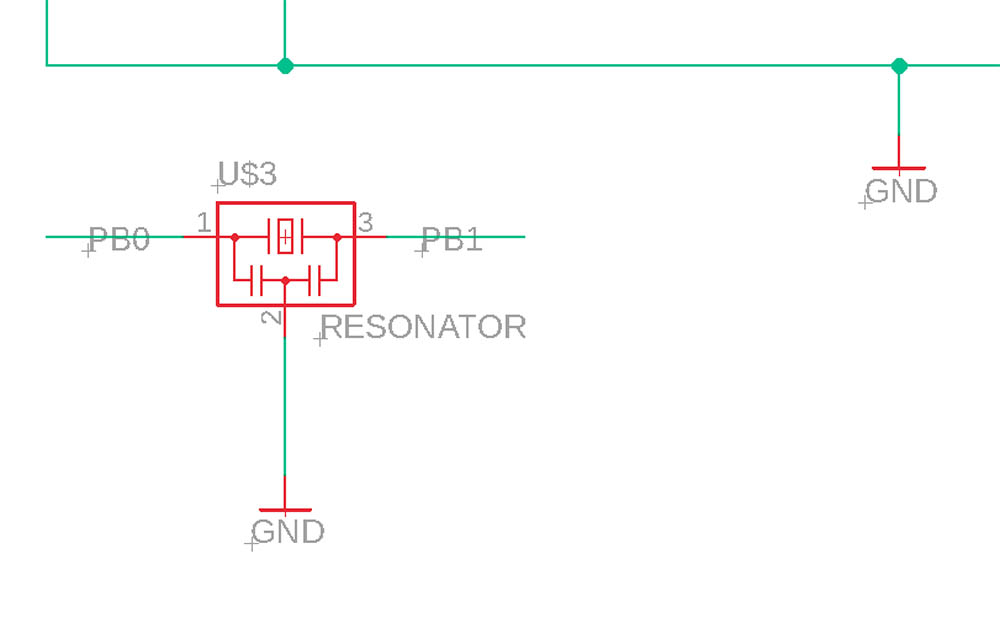
Which way is better to connect to GND? Multiple small ground connections seemed like the cleaner option.
Finally, all the connections were good and the board passed the design rule check, so I moved on to milling.
